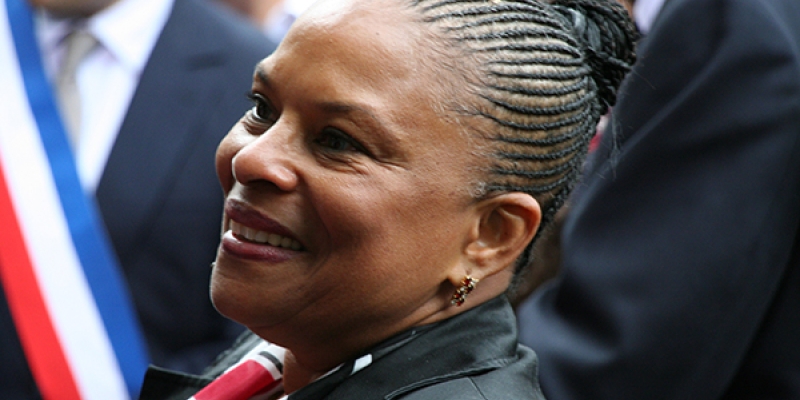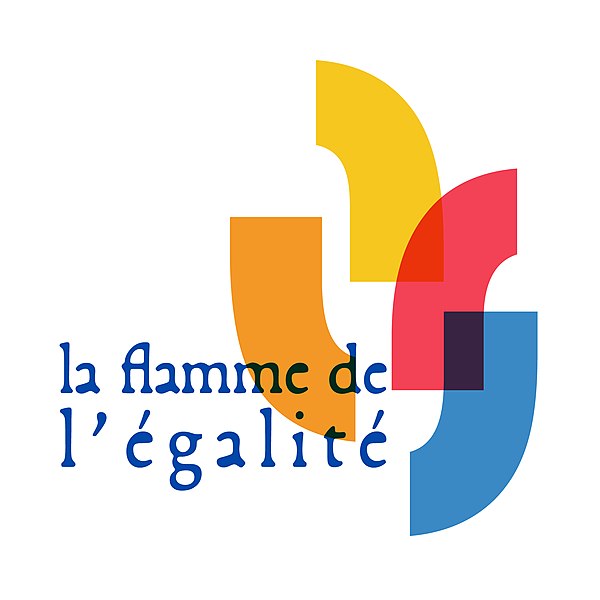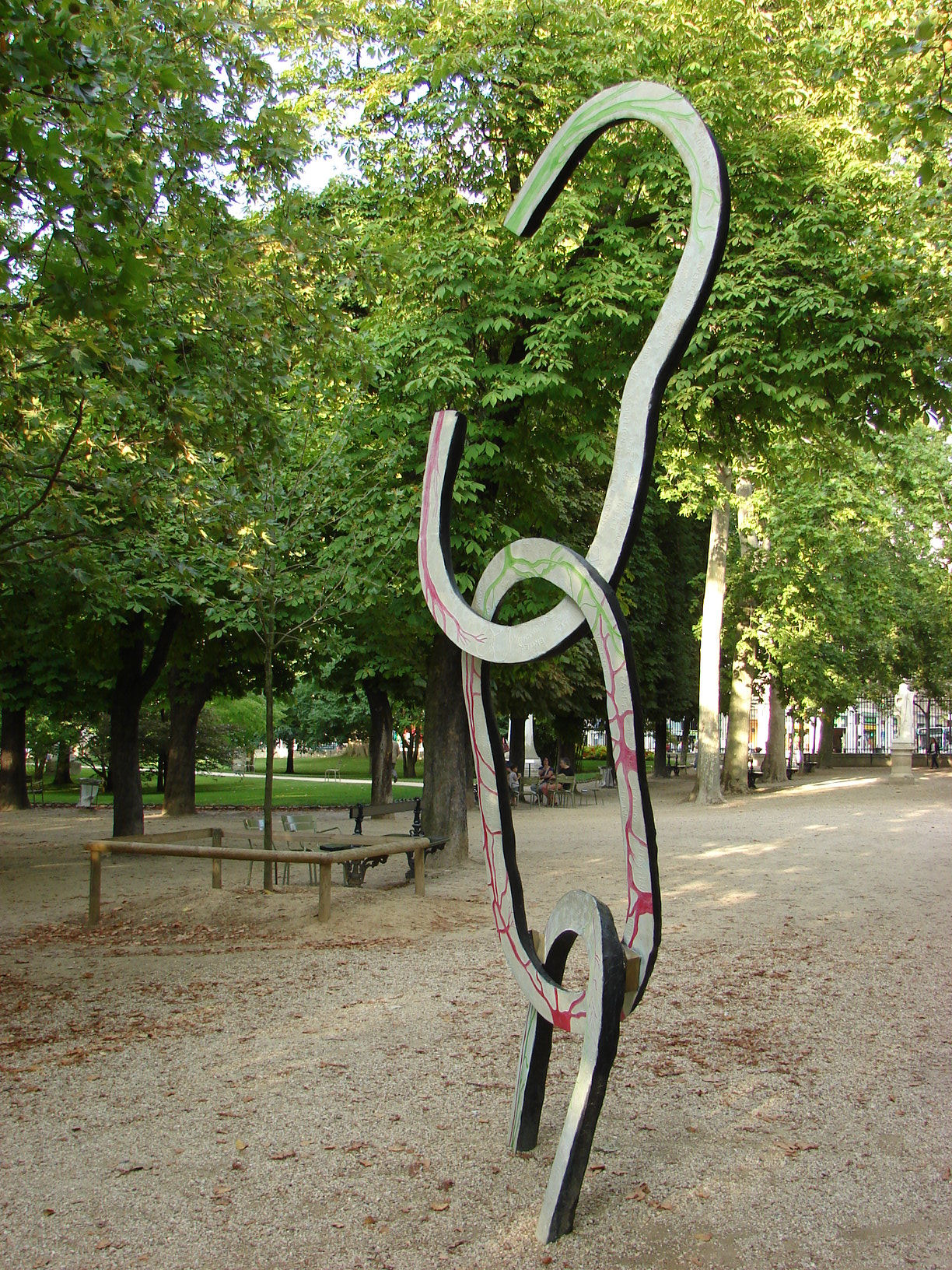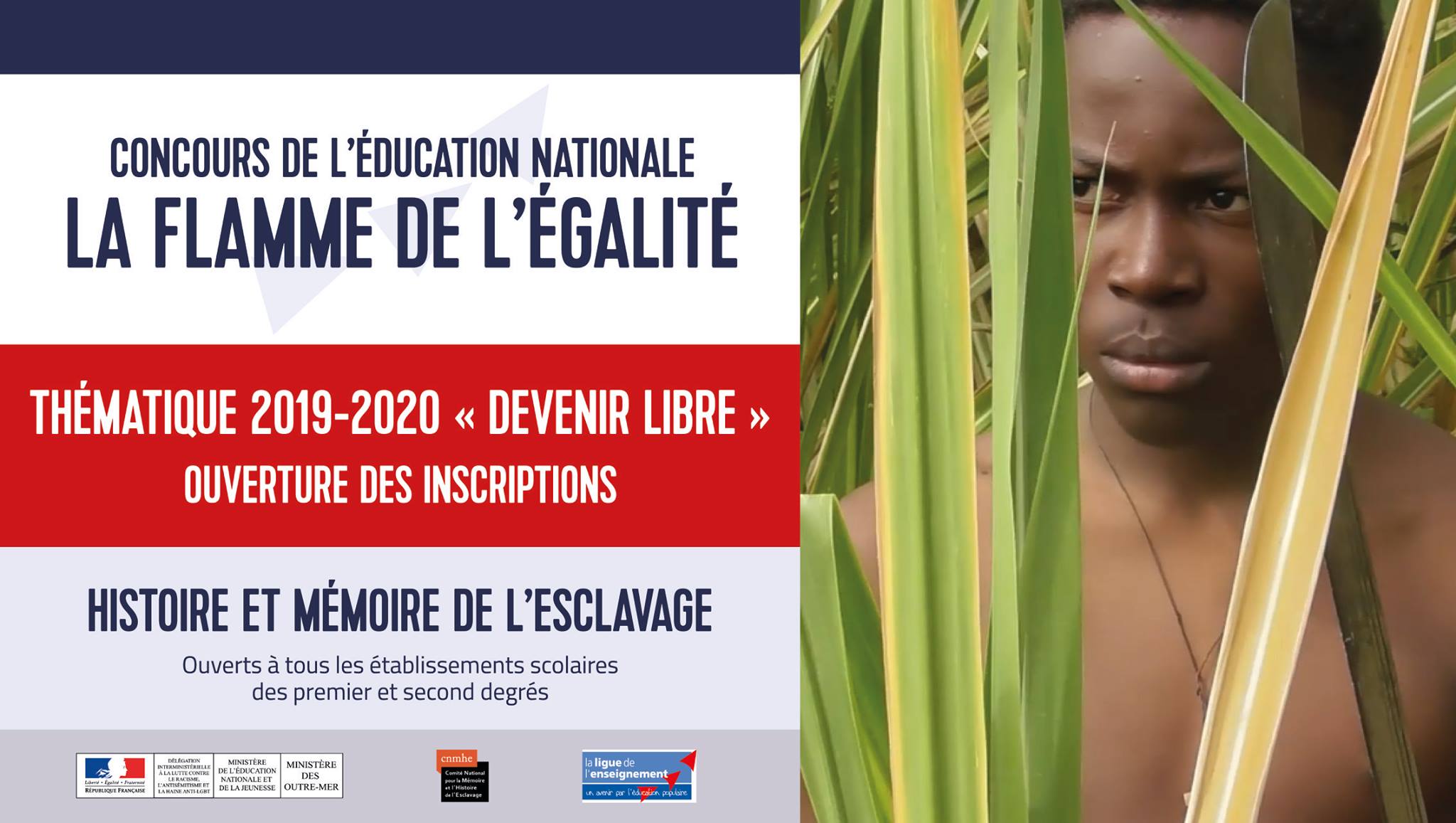
Friday, November 24th, 2023
La Flamme d'Egalité (The Flame of Equality)
Christiane Taubira, author of the Loi Taubira
© Entrée to Black Paris
Following up on the article that we published on May 4, 2023 about "The Flame of Equality," a nation-wide competition held at the elementary, middle school, and high school levels every year in France, we recently interviewed Benoit Falaize, President of the Competition, and Léna Jacquin, Competition Manager. They provided us with detailed information about the French government's efforts to teach and involve students in learning about the history of slavery, the slave trade, and their abolition in the French primary and secondary schools.
The following is our updated report about this remarkable program.

In 2006, President of the French Republic Jacques Chirac signed a decree stating that May 10th of each year would be an official day to commemorate the abolition of slavery in the French colonies. To mark this occasion, a polychrome bronze sculpture representing an upright chain whose top link is broken was installed on the 10th of May 2007 on the eastern side of Luxembourg Garden near the Royer-Collard gate. The inauguration ceremony was presided over by Jacques Chirac, whose term as President was about to expire, and newly-elected President of the Republic Nicolas Sarkozy, whose term would soon begin.
Called Le cri, l’écrit, the sculpture is a giant three-link chain, stretching 12 feet to the sky. Its top link is broken, and its bottom link is half-buried in the ground. Designed by French artist Fabrice Hyber, it was cast in sand at the Foundry of Coubertin in the town of Saint-Rémy-lès-Chevreuse. Since the inauguration of the sculpture in 2007, it has been serving as a focal point around which the President of the Republic, members of the government, and invited guests assemble for a ceremony to commemorate the abolition of slavery. Notably, at the ceremony in 2019, French President Emmanuel Macron affirmed that the history of slavery was part of “our history.”
 Le Cri, L'Ecrit
Le Cri, L'Ecrit
© Entrée to Black Paris
Last year, for the first time, three groups of students who won a national competition called La Flamme d’Egalité (The Flame of Equality) presented extracts of their award-winning projects to the assembled dignitaries. The competition in which they participated has been organized annually since 2014 to fulfill a law (Loi n° 2001-434) that declared that slavery and the slave trade were crimes against humanity.
The law, which is named after its author, Christiane Taubira, was ratified unanimously by the French senate on May 21, 2001. Article 2 of the law requires that the French educational system “give the slave trade and slavery the proper place they deserve.” It has been interpreted to mean that the history of slavery and the slave trade should be taught in the French school system.
The Flamme d’Egalité competition was founded under the initiative of the Comité National pour la Mémoire et l'Histoire de l'Esclavage (National Committee for the Memory and the History of Slavery). Elementary schools, middle schools, and high schools throughout France and all its overseas departments can elect to participate. Students who express an interest in the subject are invited to compete in the contest by creating an artistic project in their classrooms around a specific, pre-selected theme related to slavery, the slave trade, and their abolitions. In 2019-2020, for example, the theme for the competition was “Devenir Libre” (Become Free).
 Call for submissions 2019-2020
Call for submissions 2019-2020
Students are encouraged to think creatively and to come up with some form of artistic presentation that best expresses their interpretation of the theme. No restriction is imposed on the form that their project should take, and in the past students have created poems, skits, readings, songs, dances, videos, paintings, and other artistic presentations for submission to the competition.
There are two levels of competition: academic and national. An academic jury in each region judges the entries from that region on eight different criteria, including whether the project is well structured, whether the students in each group have participated fully in the project, and whether the exactitude of historical references has been maintained.
Following the first-level competitions, the projects judged the best by the academic juries are forwarded to a national jury for evaluation. At that level, only three winners are selected: one from an elementary school, one from a middle school, and one from a high school. These winners are invited to attend the May 10 ceremony in Paris, where they are awarded certificates of achievement. Compensatory prizes are also awarded.
The first ceremony for the competition was held in 2015.
Last year, for the first time, rather than merely attending an award ceremony, the laureate students presented excerpts from their winning projects to the assembled audience of dignitaries, which included ministers, senators, deputies, journalists, writers, and intellectuals. Particularly edifying was a short skit presented by two girls from L’Ecole Elémentaire Ferdinand Buisson de Sotteville-lès-Rouen, an elementary school in the Normandy region of France.
In the skit, the girls read an extract of an animated video that recounted the life of Josephine Baker in France as a star, as member of the French Resistance, and as mother of twelve adopted children, which she called “The Rainbow Tribe.” A video (in French) of the entire commemoration ceremony can be viewed below:
The girls appear at 1:26:43.
The presentations delivered by the laureate students on May 10, 2022 are a testament to the extraordinary effort that the French government has been making since 2014 to fulfill its national mandate to teach the history of slavery and the slave trade in its schools.

 Our Walk: Black History in and around the Luxembourg Garden - Click here to book!
Our Walk: Black History in and around the Luxembourg Garden - Click here to book!